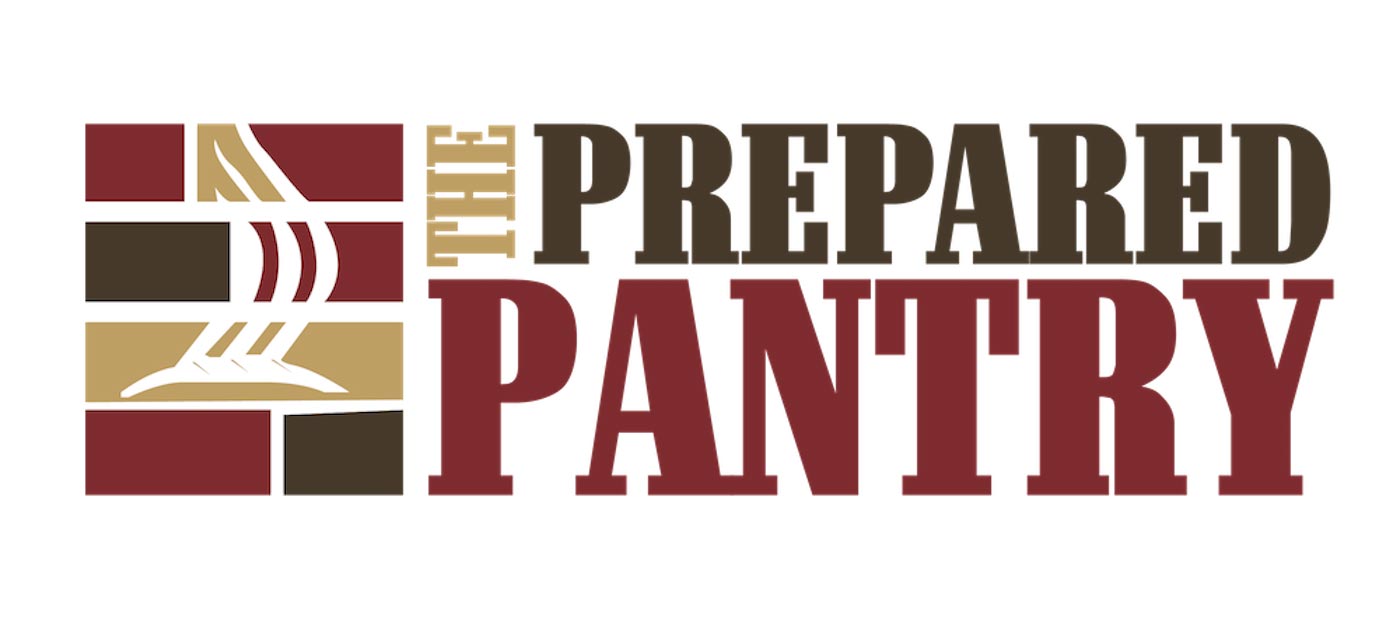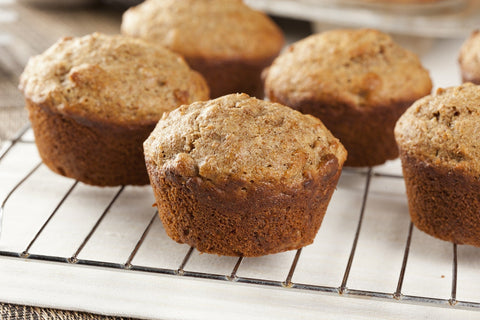Sometimes, diners have the best foods.
I stopped for breakfast at a country diner the other day. I ordered their Deluxe Pancake Breakfast with eggs and bacon. Their pancakes were exceptional.
How does a diner, a restaurant, make perfect pancakes? Here is a step-by-step guide for perfect pancakes.
Start with the mix
Few restaurants are going to make their pancakes from scratch. Labor is too expensive. And your time is too valuable. Choose a mix.
For everyday pancakes, I want buttermilk pancakes. For fancy pancakes, sour cream or cream cheese works fine. Yes, in a mix, these will be dried, powdered ingredients.
They have a dual role: provide flavor and provide leavening so that your pancakes are light and fluffy. All three are acids. As acids, they react with a base—almost always baking soda—to create carbon dioxide. This is the gas that makes the little bubbles that makes your pancakes light and fluffy.
Often, your mix will have baking powder also. That’s okay. Baking powder can create carbon dioxide bubbles independent of an acid like buttermilk.
But what about the flavor? Buttermilk has a dual flavor role. Buttermilk that has not been neutralized by the chemical reaction has a sour taste. That’s where that sourdough-like taste comes from.
But the buttermilk that has been neutralized has a very different taste. Buttermilk without the acid has no tang. It is quite neutral and with a little sugar, almost a hint of butterscotch. That’s what makes buttermilk syrup and buttermilk pie so yummy.
So, as you explore the world of mixes, decide whether you want one with a strong sourdough-like flavor. If so, choose one with the acid—usually buttermilk–high on the ingredient list. Since buttermilk is more expensive than flour, better mixes are more likely to have more buttermilk.
Mixing the batter
The mix will give you directions. The tendency is to mix too much. Never use an electric mixer—it’s too easy to overmix.
Your batter should have lumps in it. If they are not large, they’ll cook out on the griddle.
All wheat flour has the two proteins that form gluten. But gluten has to be formed, mechanically worked in a wet environment. The more you mix, the more gluten you form. The more gluten, the tougher the pancakes. So, love the lumps.
But you don’t have to have lots of them. Your target is a scattering of small lumps throughout the batter.
The batter should be thin enough to pour easily and spread to no more than 1/4 inch thick.
Preparing and testing the griddle

Most restaurants are going to spray the grill with a nonstick oil spray and then wipe the griddle with a paper towel. They will prep the entire surface. A thin coating of oil on a heated griddle means more uniform cooking and color.
You can do the same. Pour a little oil on the griddle and then wipe it down with a paper towel.
But that diner I mentioned earlier—they were using butter. I could taste the butter. Butter pancakes taste better. But you can add butter to the cooked pancakes.
But what’s the difference? Which should you use?
Butter burns at a much lower temperature. You can use butter, but you’ll have to wipe the griddle down to remove excess butter before pouring the batter and between batches. Try it and see if it’s too much trouble for you. You can always use oil and add butter to the cooked pancakes after cooking.
How hot should your griddle be?
Get a little water on your fingers and flip droplets onto the griddle. The droplets should sizzle, dance, and steam.
Instead of loading the griddle, cook one pancake to test. You can then adjust the temperature and you have a sense for how long you need to cook them.
Getting uniform, round pancakes
Turn your griddle to 375°F and make sure it’s at full temperature before you begin to cook.
Use a ladle to get the same-sized pancakes. Fill the ladle and then, with a steady motion, pour the batter from a height of ten inches. Gravity will help you make nice, even circles.
How do you tell when it’s time to turn them?
The best way to tell if the pancakes are ready to turn is to watch the edges. When the edges are no longer shiny, they’re ready to turn.
I grew up with my mother’s voice in my head, “Watch the bubbles.” The bubbles will rise to the surface and set leaving little craters. Yes, it’s time to turn them. But it’s easy to overcook them watching for bubbles.
Ditch the dome
After flipping the pancake, wait a few seconds and then press the center lightly. This will reduce the doming effect and make your pancakes more attractive.
Keep your pancakes warm
Warm pancakes are better pancakes. Serve them immediately or store them in a pancake and tortilla keeper.
My granddaughter, when she was very young, her mother would make extra pancakes. She saved them in a keeper in the refrigerator during the week.
After school, my granddaughter would hurry home for her afternoon pancake snack. Her favorite was double chocolate pancakes with chocolate chips served with coconut syrup.
Pretty smart girl. Pretty smart mom.
How To Reheat Pancakes
Fluffy, golden brown pancakes dripping with maple syrup and melted butter are a breakfast classic cherished by many. But what happens when you have leftover homemade pancakes and want to enjoy them just as fresh as when they were first made? Reheating pancakes to retain their light and fluffy texture can be an art, and we're here to guide you through it. With a few simple steps, you can elevate your leftover pancakes to a delicious morning treat once again.
Step 1: Preparation
Before diving into reheating, ensure you have all your ingredients and equipment ready. You'll need your homemade pancakes (if frozen, ensure they're thawed), melted unsalted butter, maple syrup, a baking sheet, and optionally, a pat of butter for extra indulgence.
Step 2: Preheat and Arrange
Preheat your oven to a low temperature, around 250°F (120°C). Place your baking sheet inside to warm up. Meanwhile, arrange your leftover pancakes in a single layer on the baking sheet. This will ensure even reheating and prevent them from becoming soggy.
Step 3: Brush with Butter
Using a pastry brush or spoon, lightly brush each pancake with melted butter. This step not only adds richness but also helps in maintaining moisture during reheating.
Step 4: Reheat
Once the oven and baking sheet are preheated, transfer the pancakes into the oven. Let them warm through for about 5-7 minutes. This gentle reheating at a low temperature prevents them from drying out while ensuring they're heated evenly.
Step 5: Serve and Enjoy
Carefully remove the baking sheet from the oven. Transfer the reheated pancakes onto serving plates. Drizzle generously with maple syrup and add a pat of butter on top for that classic touch. Now, savor the moment as you indulge in the fluffy goodness of your reheated homemade pancakes.
Additional Tips:
- If you're short on time, you can reheat pancakes in the microwave. However, this method may result in slightly less fluffy pancakes compared to oven reheating.
- To freeze pancakes for future use, allow them to cool completely after cooking. Then, stack them between layers of parchment paper and place them in an airtight container before freezing. They can be reheated directly from frozen in the oven or microwave.
- For homemade pancakes that rival your favorite diner's, ensure your pancake batter rests for at least 10-15 minutes before cooking. This allows the gluten to relax, resulting in lighter and fluffier pancakes.
- Experiment with different toppings and fillings to customize your reheated pancakes according to your taste preferences. Fresh fruits, whipped cream, or a sprinkle of cinnamon sugar can add delightful variations.
Delight Your Family With Raspberry Sour Cream Pancakes
These aren’t buttermilk pancakes, they’re sour cream pancakes. They’re loaded with little raspberry pieces that melt like chocolate chips on the griddle. That’s the crimson splashes you see in the pancakes. The syrup is Raspberry Syrup from Pioneer Valley.


 Dennis Weaver
Dennis Weaver


Comments (0)
There are no comments for this article. Be the first one to leave a message!